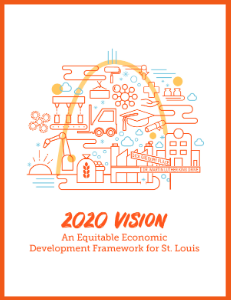Equitable Economic Development Strategy Framework
Equitable Economic Development Framework connects people, neighborhoods, and jobs to provide opportunity for growth and investment on equitable basis across the entire City; City seeking additional input from the public
Equitable Economic Development Strategic Framework, which sets forth a vision to create collaborative opportunities for development and investment that benefit all the City’s people and neighborhoods. It was developed with input from hundreds of interviews, meetings, other feedback from the community, and the guidance of a 47-member Advisory Committee.
While SLDC is the Framework’s administrator, its implementation and ultimate success depends on the collaboration and investment of private and public institutions and businesses across the City in coordination with other regional, citywide and neighborhoods development plans.
The Framework lays out four key aims
-
Increase the City’s population by 30,000 residents by 2030.
-
Exceed the national growth rate in jobs and payrolls among our key industries.
-
Close existing opportunity, employment, wage, entrepreneurship, and wealth gaps for people of color.
-
Achieve sustainable long-term tax revenue growth for the city.
Strategies and action items
The Framework organizes 56 strategies and action items around three major strategic areas
Opportunity to thrive
Identifies the types of supports needed to translate economic growth into higher and more stable incomes and opportunities – and increased household wealth – for St. Louisans and eventually to support population growth in the city.
Clusters
Identifies the sets of industries that can provide the foundation for significant growth in jobs and entrepreneurship, with a focus on clusters that can provide quality opportunities for St. Louisans of all educational attainment levels.
Place
Recognizes that conditions and opportunities vary across the city and that a place-based approach is necessary to create a high quality of life for all residents.
Public Comments
The public comment period ended on August 28 and the final version has been presented to the City’s Housing, Urban Development and Zoning Committee.
